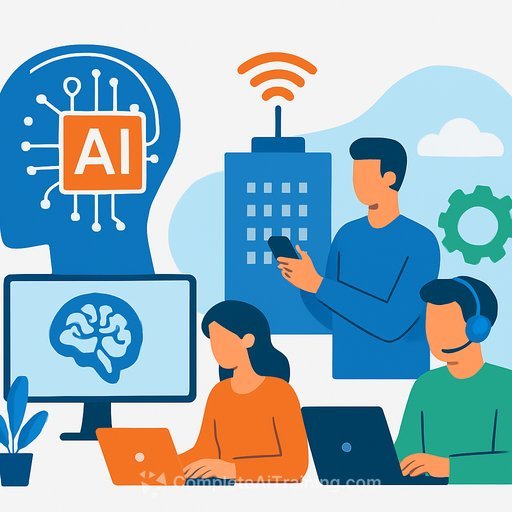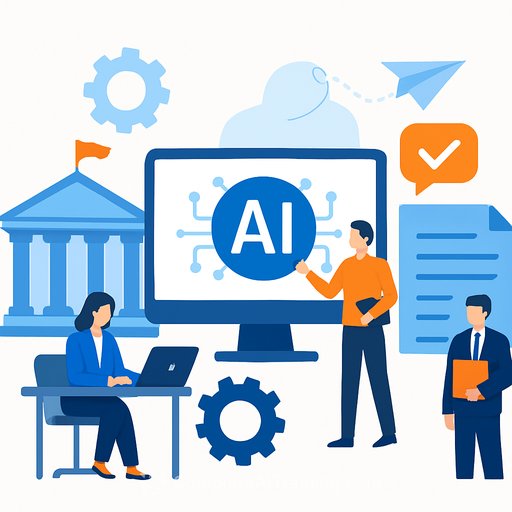Generative AI Powering Smart Grid Management and Utility Forecasting
Generative AI is transforming grid operations by enabling smart grid management and improving utility forecasting. Its ability to analyze large data sets makes it possible to predict future energy consumption, demand, and generation rates with greater accuracy.
The energy sector, crucial to daily life, benefits significantly from digital transformation, with generative AI playing a central role. Traditional grid management methods face challenges such as instability, inefficiency, high costs, and limited data-driven decision-making. These issues hinder sustainability and smart grid development.
By integrating generative AI, utilities can optimize grid operations, enhance renewable energy integration, improve resource allocation, and achieve better reliability and regulatory compliance. Investing in generative AI for grid management and forecasting offers a promising path for the energy sector’s future.
Key Stats
- The generative AI market in utilities is projected to grow from $1.03 billion in 2024 to $1.4 billion in 2025, with a CAGR of 36.7%.
- By 2029, the market is expected to reach $4.86 billion, maintaining a CAGR of 36.4%.
- The broader generative AI in energy market size is forecasted to grow from $770.6 million in 2023 to approximately $6.62 billion by 2033, at a CAGR of 24%.
What Is Generative AI in Powering Smart Grid Management and Utility Forecasting?
A smart grid combines digital communication with energy distribution to enable two-way data and electricity flow. This setup allows utilities to optimize production, transmission, and distribution efficiently.
Utility forecasting focuses on anticipating future energy demand for better resource management. Generative AI enhances these processes by integrating advanced technologies, analyzing diverse data sources, and optimizing grid functions. This leads to smoother energy delivery, better energy savings, and a stronger foundation for sustainable global development.
Top Benefits of Generative AI in Smart Grid Management and Utility Forecasting
Load Forecasting and Demand Prediction
Traditional systems struggle with managing complex load demands. Generative AI analyzes consumption patterns, weather, and peak usage times to forecast energy needs accurately. This helps prevent overloads and supports proactive grid management.
Smart Integration of Distributed Energy Sources
Grid systems often rely on multiple energy sources like solar panels, electric vehicles, and microgrids. Generative AI enables seamless integration of these sources, ensuring smooth energy flow and centralized control for better management.
Real-Time Grid Load Balancing
Energy supply must match demand to avoid waste or shortages. Unlike traditional systems, generative AI provides real-time load balancing by continuously analyzing demand and adjusting energy distribution accordingly.
Theft and Anomaly Detection
Energy theft and system anomalies pose risks to grid stability. Generative AI detects unusual patterns by learning regular transmission behaviors and alerts operators to potential issues, adapting continuously to new threats.
Scenario Simulation
Utilities need to prepare for events like storms, cyberattacks, or sudden demand shifts. Generative AI simulates various scenarios based on data analysis, helping utilities plan and maintain uninterrupted energy supply.
Personalized Consumer Energy Insights
Consumers have unique energy usage patterns. Generative AI provides personalized insights and recommendations to optimize consumption, enabling smarter energy use and cost savings, especially when combined with smart home devices.
Enhancing Sustainability
Generative AI supports the integration of renewable energy sources, reducing dependence on non-renewable fuels. This promotes long-term environmental sustainability by optimizing energy generation and distribution.
Meeting Regulatory Requirements
Compliance with regulations is critical in energy management. AI-driven forecasting improves accuracy in meeting these standards, reducing the risk of penalties and enhancing operational efficiency.
Challenges of Generative AI in Smart Grid Management
- Simulated scenarios may not always reflect real-world complexities, affecting system performance during unexpected events.
- Data quality and availability issues can lead to inaccurate predictions, potentially disrupting grid operations.
- The energy sector faces a shortage of skilled professionals experienced in generative AI deployment and maintenance.
Final Take
Generative AI is making smart grid management and utility forecasting more precise and efficient. By leveraging data analysis and predictive capabilities, it helps utilities optimize energy supply and demand, contributing to better resource management and sustainability. This technology holds strong potential to improve grid reliability and operational efficiency for the long term.
For professionals looking to deepen their understanding of AI applications in energy and other sectors, exploring Complete AI Training’s latest AI courses can provide valuable skills and insights.
Your membership also unlocks:










